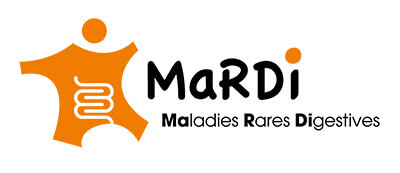Definition and clinical description
Peutz-Jeghers syndrome is a hereditary disease. It is characterised by the development of what are known as “hamartomatous” polyps in the digestive tract. These polyps are benign.
Symptoms and prevalence
The polyps appear during the first ten years of life. They can develop anywhere in the digestive tract, but are very frequent in the small intestine. These polyps may lead to complications, such as intestinal obstruction, haemorrhaging or even invagination (folding of the intestine on itself). The most characteristic signs of the disease are blue to brown spots on the mucosa, particularly in the mouth.
There is one case per 150,000 persons in Europe and the USA.
Care and treatment
The ablation of polyps and the treatment of complications of the disease are done with the usual techniques.
Diagnostic method
Diagnosis is based on clinical signs, family history, pigmentation of the mucosa and histological results from the biopsy of the hamartomatous polyps.
Genetic analysis
Peutz-Jeghers syndrome is transmitted in an autosomal dominant manner.


